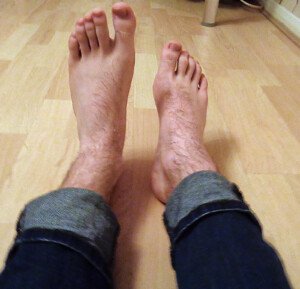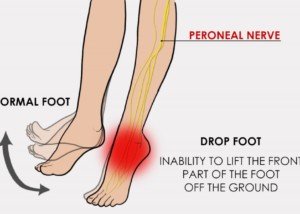
There is a simple, painless and non-intimidating test to evaluate foot drop, which can have many causes.
If you’ve been experiencing foot drop and want a medical test to evaluate this symptom, there’s a particular procedure that you should ask your doctor about.
The procedure is a high resolution ultrasound — which did very well as a tool, according to a study.
What is foot drop?

Pagemaker787, CC BY-SA
Foot drop is when a person experiences inability or difficulty moving the ankle and the toes, and this problem causes the foot to slap about when walking, unable to clear the floor or ground.
Why the ultrasound test for foot drop?
The study was conducted at the Feinberg School of Medicine, Northwestern University in Chicago.
The nice thing about ultrasound is that it’s non-invasive.
The targeted body part is exposed to high-frequency ultrasound waves that create pictures of the patient’s insides.
When someone has foot drop, the typical tests done are EMG and MRI.
However, some people dread the idea of getting pricked by needles during an EMG, or being confined inside an MRI “tube” with its loud knocking sounds.
Tom Grant, DO, led the study of 15 patients with foot drop.
For these patients, the ultrasound was “highly effectdive” for characterizing the common peroneal nerve — which controls foot/ankle movement.
Ultrasound was able to detect that all of the patients had pathology of the peroneal nerve.
Though this was a very small study, it brings to light that in some patients, ultrasound for foot drop can be quite effective.
But it may also produce a normal result.
If the ultrasound results are normal, then the patient should undergo an EMG (electromyography) as well as an MRI (magnetic resonance imaging).
“I have a high-resolution ultrasound in my office and I use it frequently to diagnose a wide plethora of musculoskeletal problems,” says Dr. Velimir Petkov, DPM, surgeon and sports medicine specialist of the foot with Premier Podiatry in Clifton, NJ.
“That being said, as good as the newer high-resolution ultrasound units are, the gold standard is still MRI.
“If you are unsure about a certain soft tissue pathology, always order an MRI – it can literally show you things that no other imaging modality can.”

 Dr. Petkov
Dr. Petkov







































